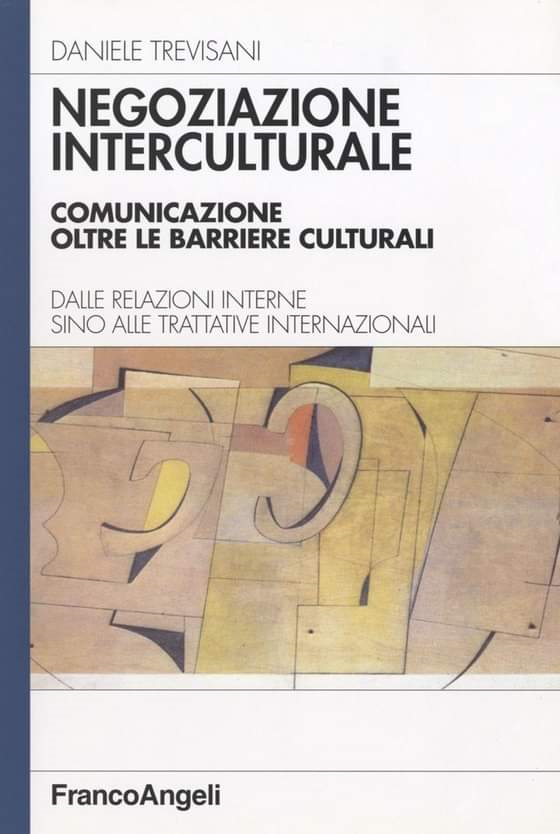© Article translated from the book “Negoziazione interculturale, comunicazione oltre le barriere culturali” (Intercultural Negotiation: Communication Beyond Cultural Barriers) copyright Dr. Daniele Trevisani Intercultural Negotiation Training and Coaching, published with the author’s permission. The Book’s rights are on sale and are available for any Publisher wishing to consider it for publication in English and other languages except for Italian and Arab whose rights are already sold and published. If you are interested in publishing the book in English, or any other language, or seek Intercultural Negotiation Training, Coaching, Mentoring and Consulting, please feel free to contact the author from the webstite www.danieletrevisani.com
__________
Let’s conclude the topics of status and status anxiety, at first explaining how the negotiator can gain power and bargaining strenght during a negotiation and secondly, how status anxiety can arise in contracts negotiations.
Knowing how to deal with new people and companies, that often have large dimensions and a high economic and political power, means knowing how to propose one’s own value as a partner (sale of the global image of the company, rather than the simple sale of a product) and this represents something totally new for many companies, a difficult horizon.
Especially for SMEs, it is difficult to negotiate on an intercultural level. In fact, in the past they were used to relationships with fragmented and divided distribution networks, to individual customer, which were not very valuable, to scarce or weak competition, in which the leverage was mainly on the part of the producer, etc. For all these reasons these companies have serious difficulties in moving from sale to negotiation. Companies, moreover, got used to selling abroad through foreign agents, while losing a large part of the margin towards distribution, without ever really deal with real intercultural negotiations.
Competitive negotiation requires the creation of bargaining strength. The contractual strength depends on how unique the offer is (or on the lack of valid alternatives or substitutes) and on how much the counterpart needs the product you are selling, everything obviously mediated by communication skills.
Managing negotiations requires preparation and role-playing. A single word can ruin a meeting.
To sum up, in negotiations the competitive advantage depends on the bargaining strength. For the seller or proposer, strength depends on:
- the uniqueness of the offer: an offer that cannot be compared to other offers has more value;
- the lack of immediate alternatives: the impossibility of finding satisfaction elsewhere, even with reasonable effort;
- the lack of goods in substitution (different goods having a similar function, e.g.: train instead of plane);
- the urgency of the recipient’s need: a strong need generates less restrain and uncertainties;
- the proposer’s prestige: there are fewer barriers related to first glance evaluation of the partner if the proposer possesses prestige and credibility;
- the strength of the offer objective factors: performance features, performance technology and its real service;
- valorisation and communication abilities: in fact, these leverages cannot be automatically activated, even in the presence of a high degree of power, because activating them requires skills of valorisation and communication;
- the best possible use of bargaining strength (for those who make the offer) is positively related to the specific communication skills level of the negotiator (seller’s negotiation skills), while is negatively related to the buyer’s competences (buyer’s skills).
Contract’s negotiations are one of those contexts, in which negotiation conflicts become more evident. Each contract clause can bear cultural meanings, culturally unacceptable positions, attacks on the interlocutor’s face and image.
Legal culture is one of the most rigid culture in any national reality, and those who draw up contracts often takes an uncompromising and disrespectful position towards others’ cultures.
One of the first concerns of intercultural negotiators is therefore not to spoil the result of long and tiring verbal and personal negotiations with written elements (e.g.: documents, correspondence, contracts, etc.).
Let’s look at a real case: we will take into consideration some contract clauses proposed by an English IT company (here called XXX for privacy reasons) to an Eastern European correspondent, and its interpretations and reactions:
| Original Text | Perceived meaning and the counterpart’s comments |
| You may not substitute the IT specialist for another IT specialist without XXX prior written consent | “We send whoever we want to assist other companies. All our technicians are qualified, we have already given them all possible and imaginable guarantees, now they must also approve of our technicians, from time to time, but who do they think they are?” |
| During the period of this Agreement, you are retained on a non-exclusive ‘when-needed’ basis to perform the Services at such times and at such locations as XXX shall direct from time to time. | “But then we are not their partners, we are only there ‘when needed’. Are we, their servants? They talk about partnerships a lot and then write the opposite” |
| You shall be responsible for rectification at your own expense of any work which in the reasonable opinion of our company or any of its clients was unsatisfactory | “Are we crazy? And if customers are dissatisfied because there are no spare parts, ‘cause they do not send them to us, what do we do? And then just for an “opinion” made by them or by one of their customers, who’s in a bad mood, we have to redo everything? But what are they thinking?” |
| XXX will pay for economy class air or train travel | But look at these whore-goers! They are hunting foxes in fifty against a poor beast and now they want to send us around in second class, they will see … |
Every legal clause, like every conversational move, can be read as an approaching move, a loosening move, a distancing move or a neutral move, depending on the relational value it assumes and the presuppositions it contains. The highlighted clauses are evidently all received as moves of superiority, acts of force and submission.
The outcome of these clauses, and many other clauses, that are part of the English contract – in the real case – generates the counterpart’s refusal to sign this contract.
No company with a certain reputation in the market could ever agree to sign clauses that compromise its image so heavily.
Yet, the contract was actually drafted by one of the leading London law firms, which is evidently completely ignorant about intercultural and relational values of legal contracts.
One of the basic principles of semiotics is that every “sign” (a clause, a sentence) is not only an external form, but it also takes on a meaning.
There is therefore an intercultural legal semiotics – a relational contract law, a science studying the relational values of contracts – that deals with the contracts relational meaning, avoiding disasters such as those shown in the example.
A correct negotiation must not only protect the proposing party, but it must also safeguard the counterpart in its identity.

© Article translated from the book “Negoziazione interculturale, comunicazione oltre le barriere culturali” (Intercultural Negotiation: Communication Beyond Cultural Barriers) copyright Dr. Daniele Trevisani Intercultural Negotiation Training and Coaching, published with the author’s permission. The Book’s rights are on sale and are available for any Publisher wishing to consider it for publication in English and other languages except for Italian and Arab whose rights are already sold and published. If you are interested in publishing the book in English, or any other language, or seek Intercultural Negotiation Training, Coaching, Mentoring and Consulting, please feel free to contact the author from the webstite www.danieletrevisani.com
__________
For further information see:
- Studio Trevisani Academy’s Webstite For Business Training, Coaching and Mentoring, in Italian
- Dr. Daniele Trevisani’s Website in Italian
- Dr. Daniele Trevisani’s Website in English
- Comunicazioneaziendale.it – Italian website on Business Communication
- Medialab Research Cultural Association for Communication Research
- Dr. Daniele Trevisani Linkedin Profile in English
- Facebook Channel
- YouTube Channel
TAGS:
- ALM business method
- active training
- awareness of one’s role in negotiation
- Best coach in intercultural communication in the world
- Best coach in intercultural facilitation in the world
- Best coach in intercultural negotiation in the world
- Best Intercultural communication book
- Best world consultant in intercultural communication
- Best world consultant in intercultural negotiation
- Best world expert in intercultural communication
- Best world expert in intercultural negotiation
- Best world trainer in intercultural communication
- Best world trainer in intercultural negotiation
- Best Intercultural negotiation book
- book on intercultural communication
- book on intercultural negotiation communication
- communication difficulties
- communication skills
- Communication techniques intercultural communication
- Communication techniques intercultural negotiation
- communication training
- conversational skills
- creative strategies
- cross cultural communication
- cross cultural misunderstanding
- cross-cultural adaptation
- cultural systems
- dialogue between companies
- different cultural approach
- different cultural context
- direct line of communication
- disagreements
- Effective intercultural negotiation techniques
- face-to-face communication
- front-line communication
- high-context cultures
- How cultural differences affect negotiations?
- How does culture influence negotiation?
- intercultural communication
- intercultural communication book
- Intercultural communication books
- Intercultural Communication Coaching
- intercultural communication pdf
- Intercultural Communication Trainers
- Intercultural Communication Training
- Intercultural conversation management techniques
- Intercultural Negotiation
- Intercultural negotiation books
- Intercultural Negotiation Coach
- Intercultural Negotiation Coaching
- Intercultural Negotiation Communication
- Intercultural Negotiation Consultant
- Intercultural Negotiation Consulting
- Intercultural Negotiation Counselling
- intercultural negotiation definition
- Intercultural negotiation exercises
- Intercultural Negotiation in International Business
- Intercultural Negotiation Mentoring
- intercultural negotiation PDF
- Intercultural Negotiation Process
- Intercultural Negotiation Strategies
- Intercultural Negotiation Timing
- intercultural negotiation training
- intercultural training
- Intercultural Training Consultants
- know-how
- low-context cultures
- misunderstandings
- negotiating rules
- negotiation preparation
- negotiator’s emotional awareness
- negotiator’s growth
- open communication
- transparent communication
- What are the 5 stages of negotiation?
- What is effective intercultural negotiation?
- What is intercultural negotiation?
- working on attitudes
- working on skills
- World’s most famous expert in intercultural communication
- World’s most famous expert in intercultural negotiation
- Status
- Status achievement
- Status Anxiety
- conquering power
- feeling of superiority
- climbing to status
- defensive counter-moves
- re-balancing the situation
- superior position
- status negotiation
- avoidable statements
- culture evaluation of status
- bargaining strenght
- bargaining power
- proposing one’s own value as a partner
- competitive negotiation
- negotiation leverage
- offer uniqueness
- lack of alternatives
- recipient’s need urgency
- proposer’s prestige
- skills of valorisation and communication
- legal culture
- contract clauses
- contract negotiation
- contract interpretation
- approaching moves
- loosening moves
- distancing moves
- neutral moves
- compromising the company’s image
- moves of superiority
- acts of force
- acts of submission
- intercultural legal semiotics
- signs bear cultural meanings
- protecting the proposing party
- safeguarding the counterpart’s identity










